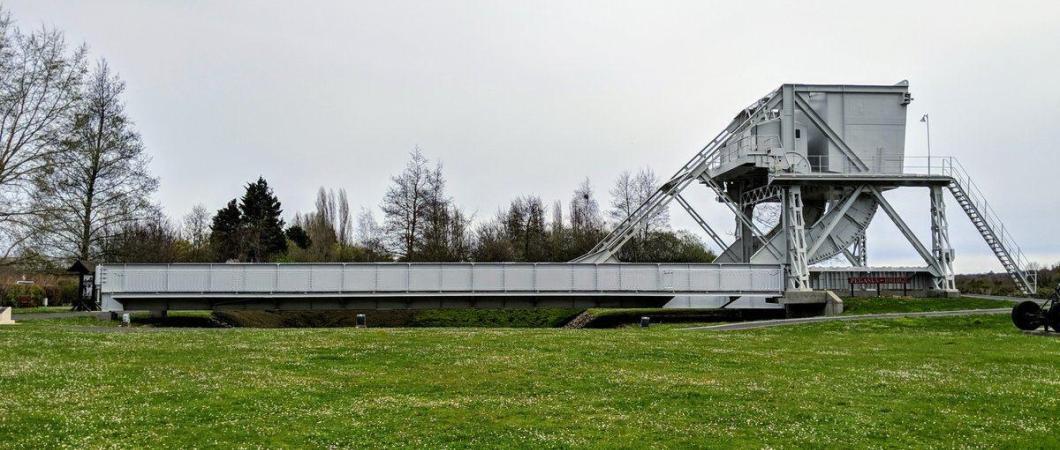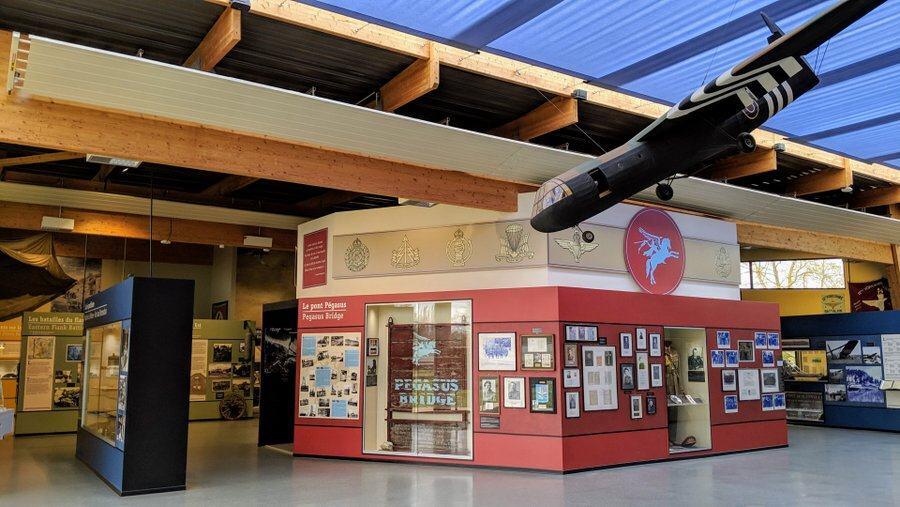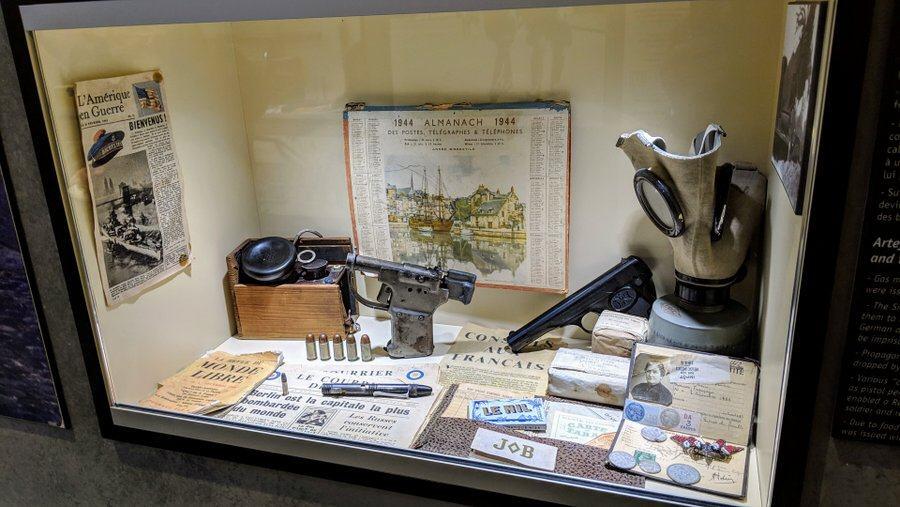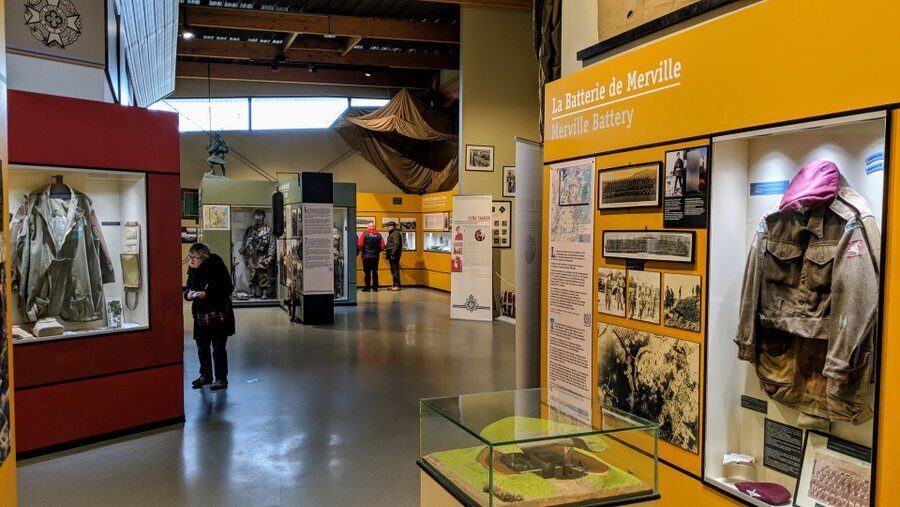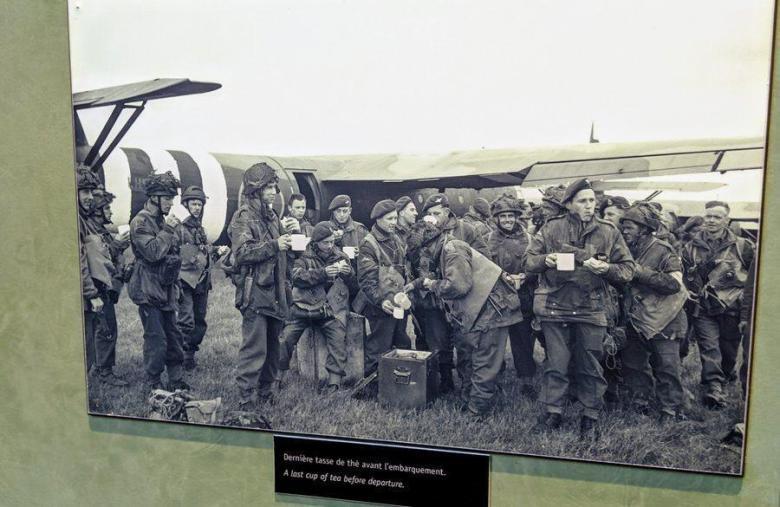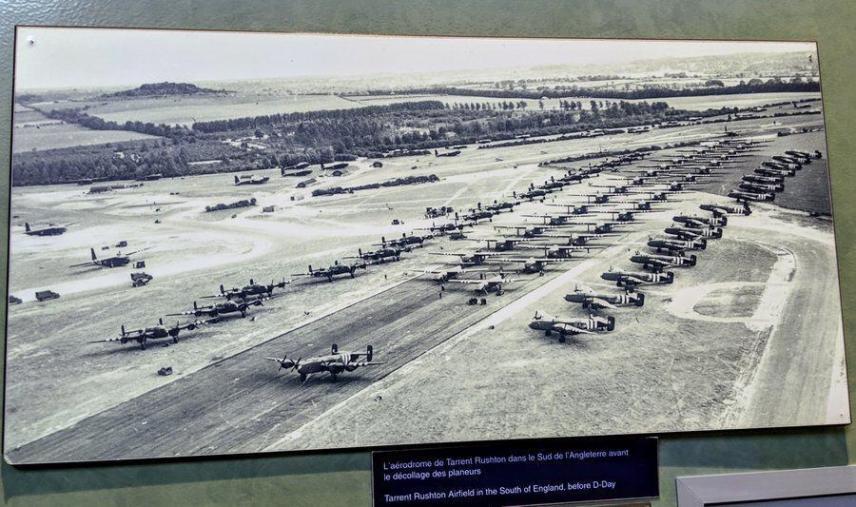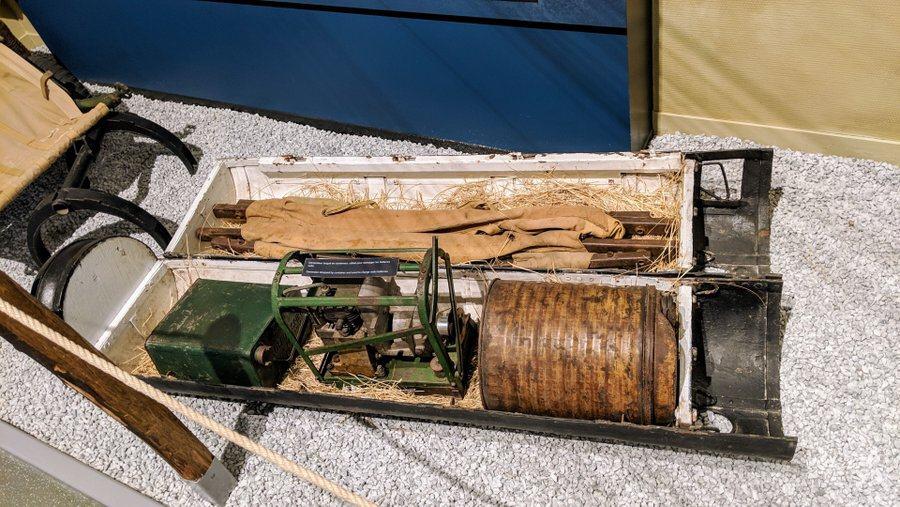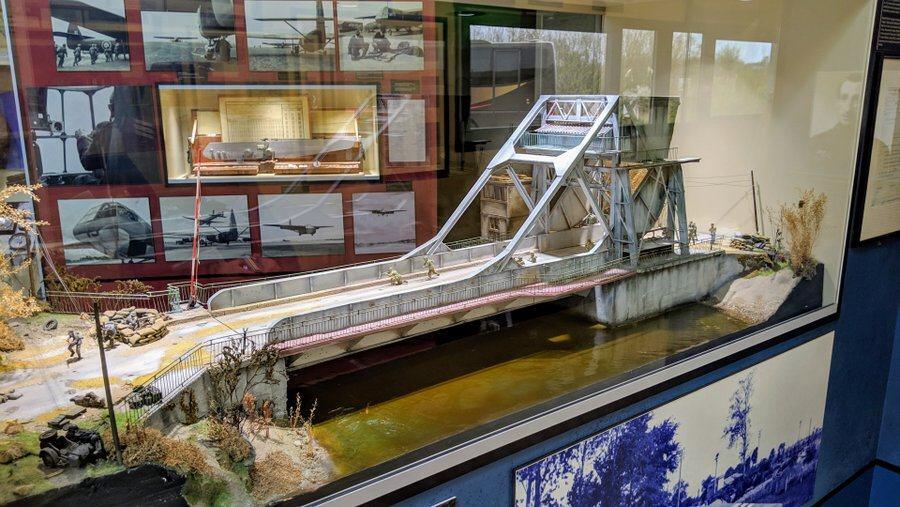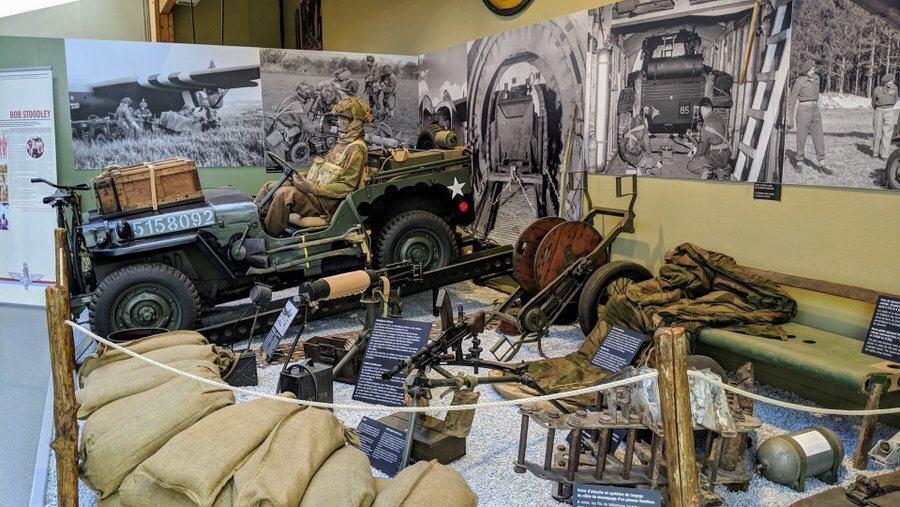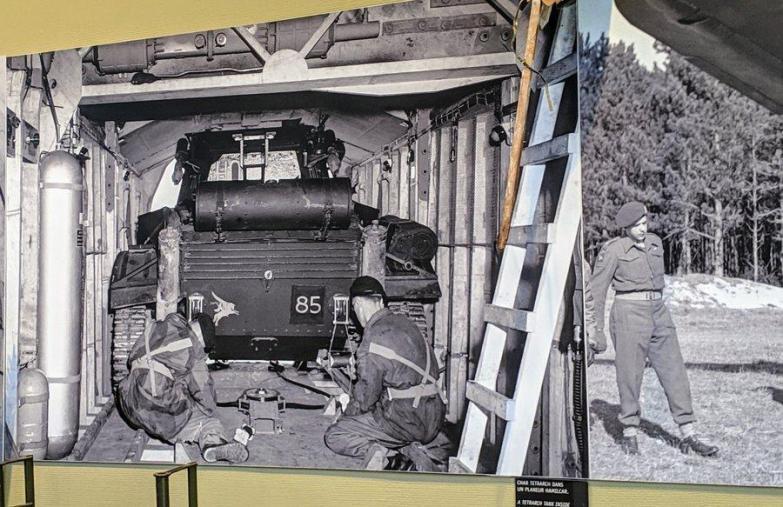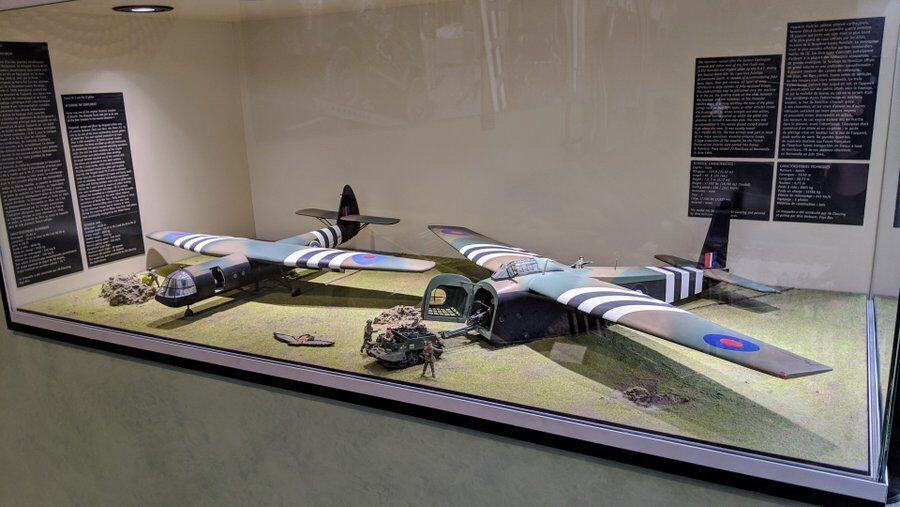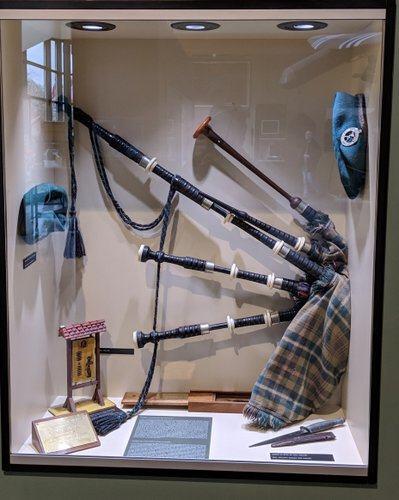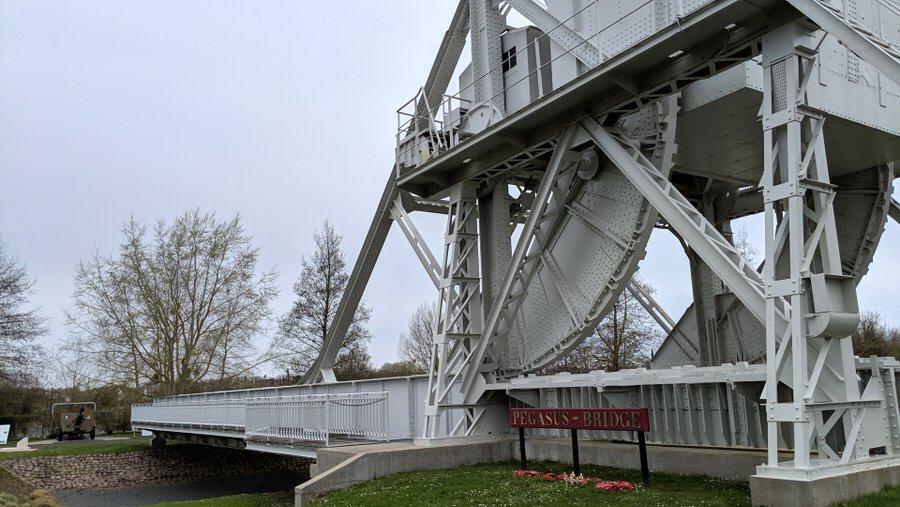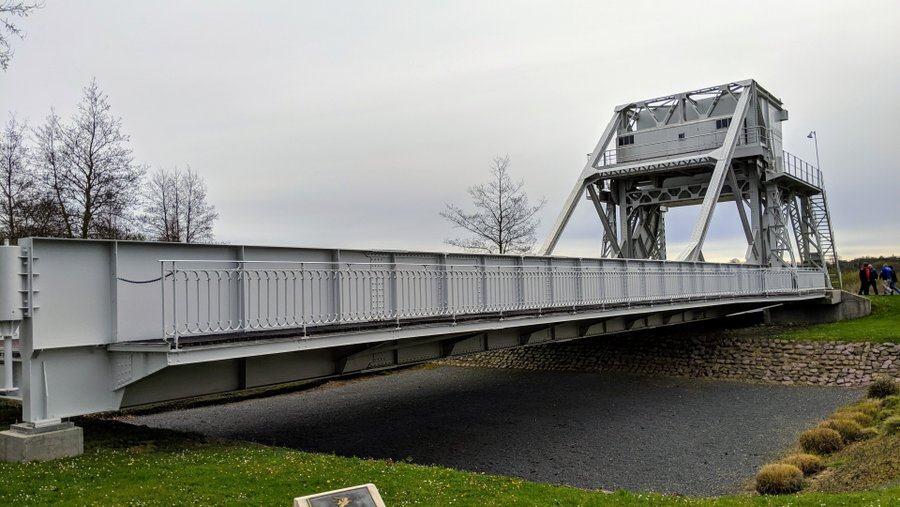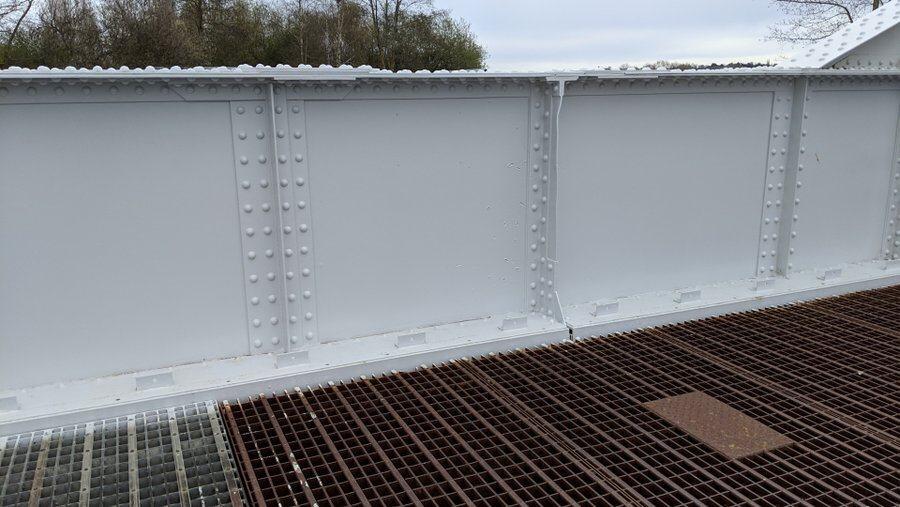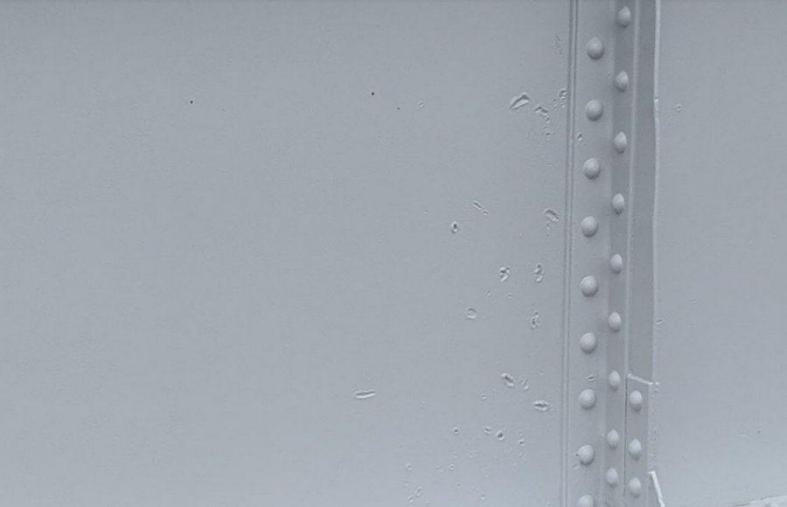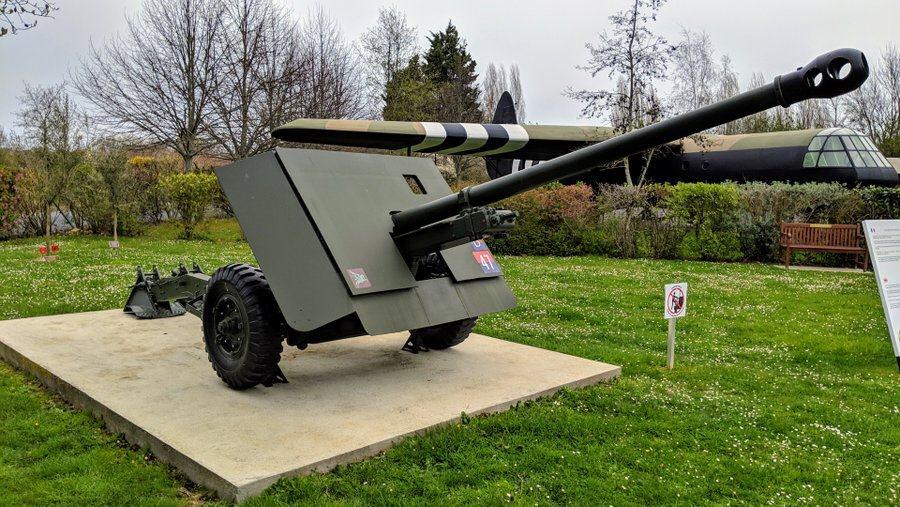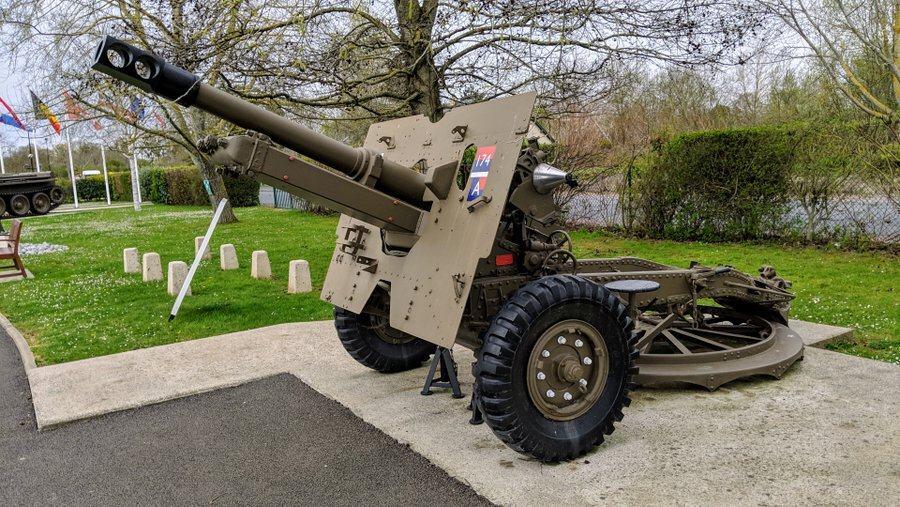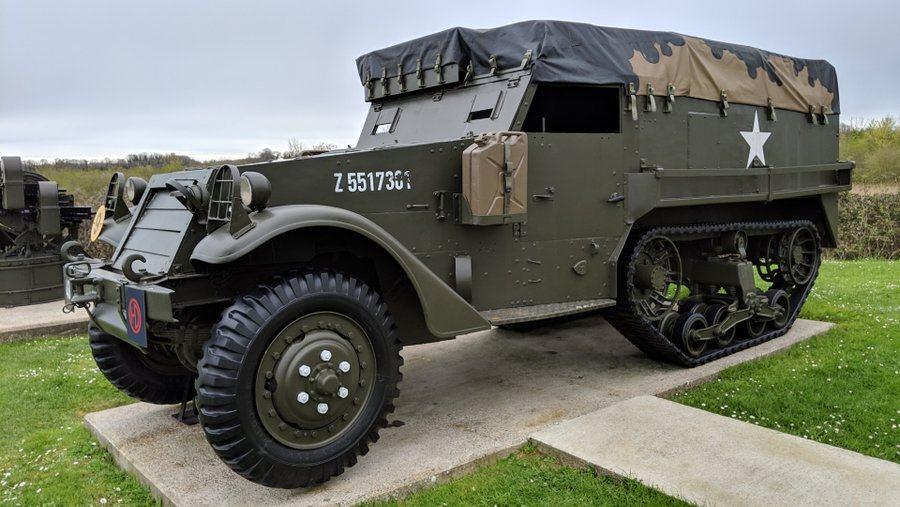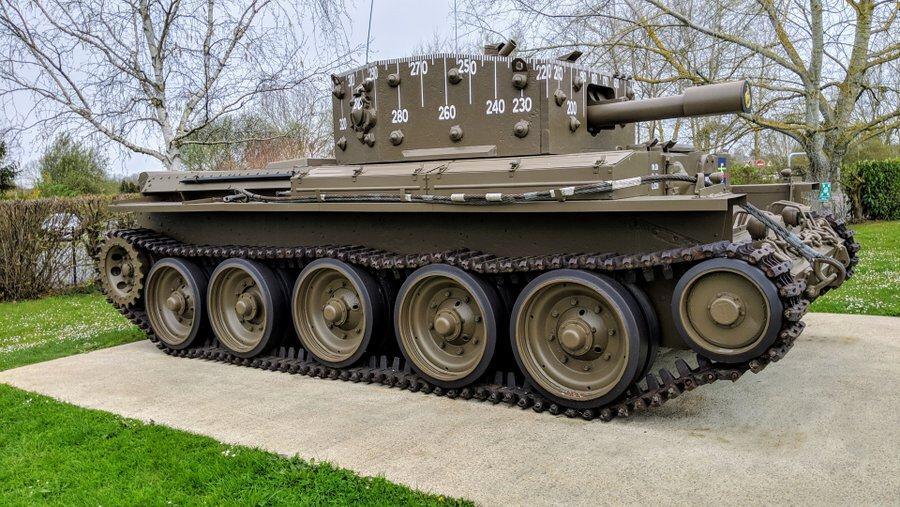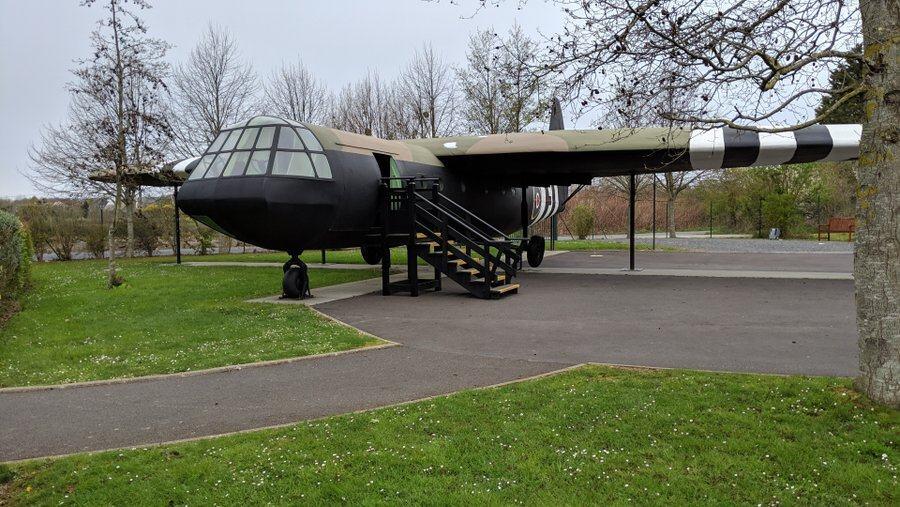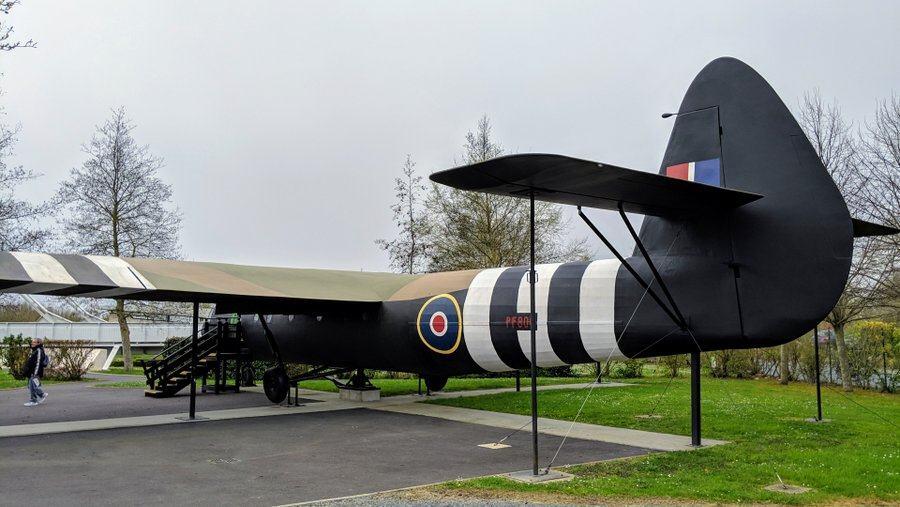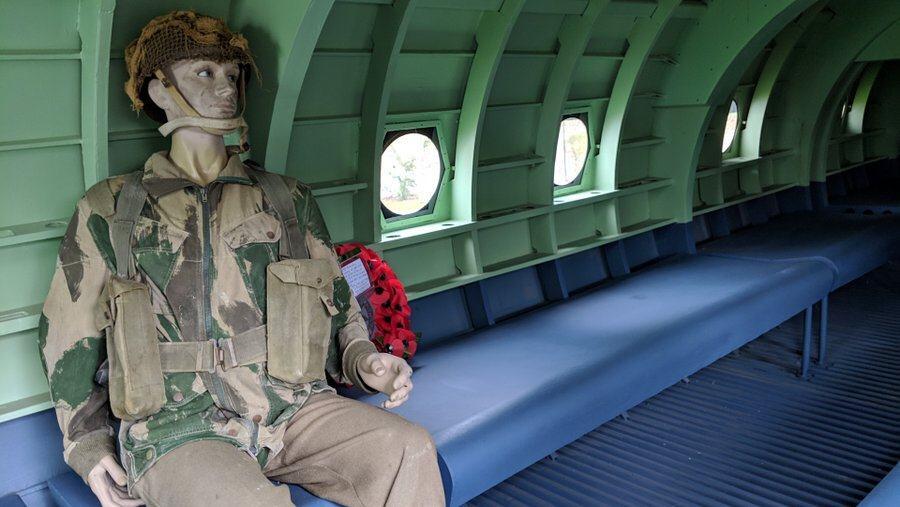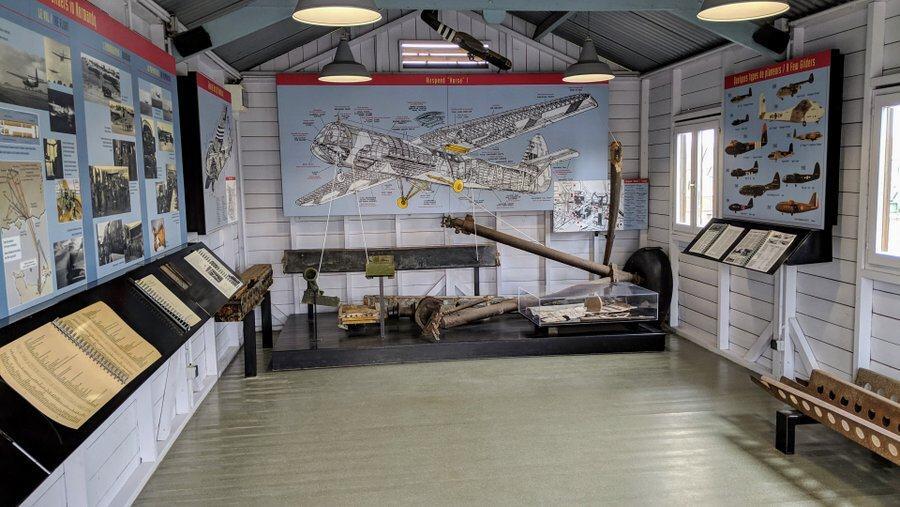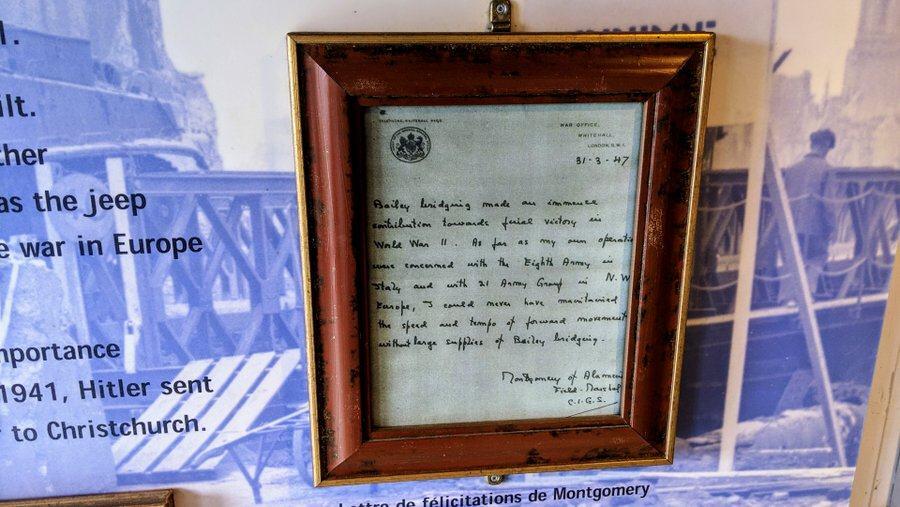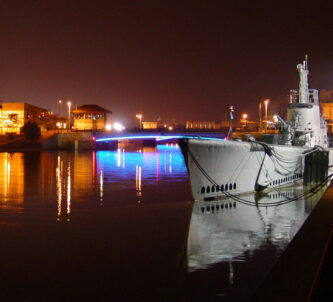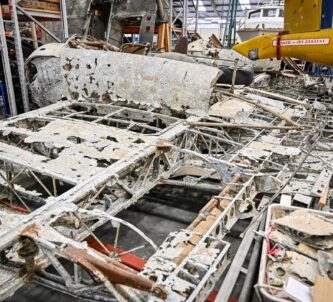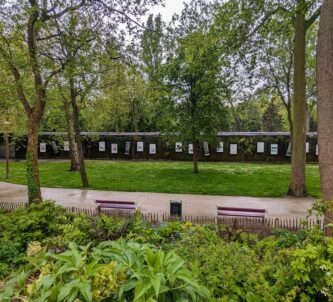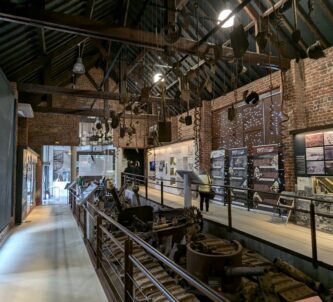Most people know that the famous airborne glider attack on Pegasus Bridge just after midnight on 6th June 1944 marked the start of D-Day, but I suspect many are a little confused about where exactly this dramatic action took place.
At the east end of the landing beaches in Normandy, lies the town of Ouistreham at the mouth of the river Orne… except the Orne isn’t one strip of water heading inland (south), it’s two.
The Orne canal runs parallel to the river on its west side, from Ouistreham to Caen, 13.5 km inland. So between the river and the canal there is a long, thin island that runs between them all the way.
Five kilometres inland/upstream from Ouistreham is the first crossing point, at the village of Bénouville. The lifting road bridge at Bénouville crosses the canal, then, 475m away, a second fixed bridge crosses the river to the nearby village of Ranville. After the events of 6th June 1944 these two bridges became better known as Pegasus Bridge & Horsa Bridge respectively.
Operation Deadstick
Operation Deadstick was the codename given to the ‘coup de main’ attack on the two bridges. Its purpose was to prevent German armoured forces from attacking the D-Day landing beaches by defending the east flank. In the west, American airborne forces would be doing the same, around Sainte-Mère-Eglise.
The troops chosen for it were D Company (with 2 platoons from B Company), 2nd Battalion of the Oxford & Bucks Light Infantry commanded by Major John Howard. The six Horsa gliders used for the attack, three on each bridge, also carried 20 sappers of the Royal Engineers of 249 Field Company (Airborne), and, of course, the heroic* 12 pilots of the Glider Pilot Regiment – 181 men in total.
At 16 minutes past midnight on 6th June, the first glider landed on the island at the east end of the Bénouville bridge. Over the next nine minutes the others followed. The two bridges were guarded by a garrison of 50 Germans, with two sentries on watch on each bridge. The surprise was so complete that after a brief firefight lasting just 10 minutes the bridge at Bénouville (Pegasus) was taken, and the river bridge (Horsa) soon after.
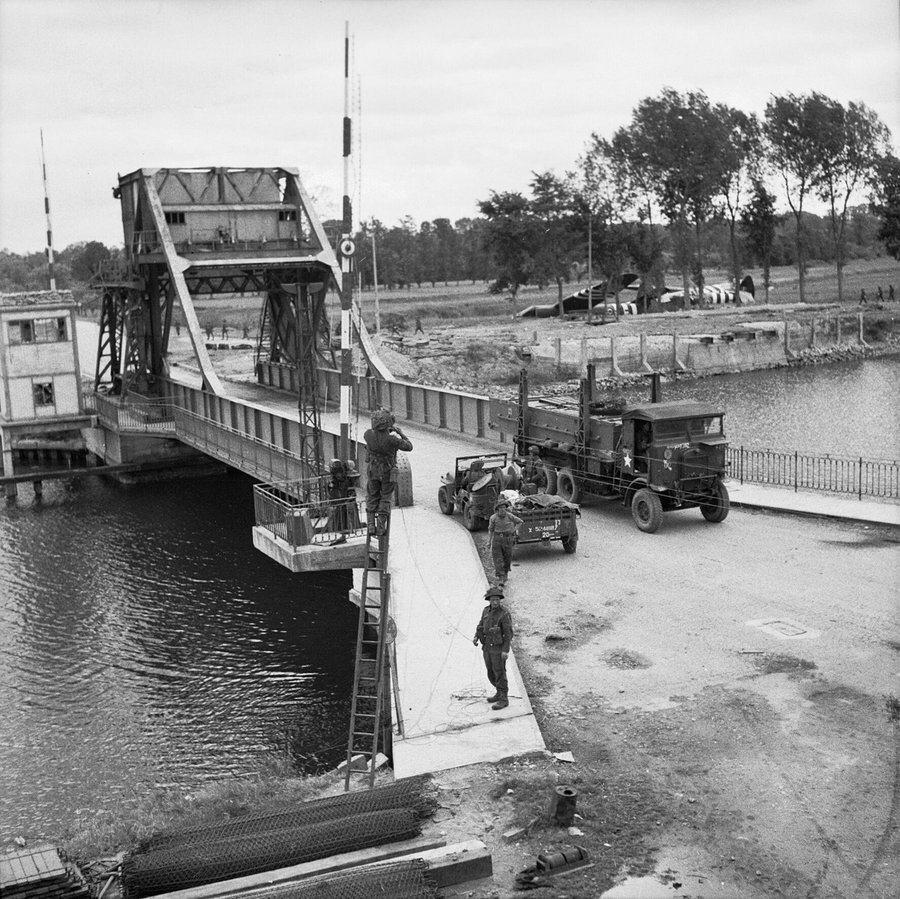
It is a night of ‘firsts’ – The first allied soldier to die in the invasion of France (Sgt Greenhalgh drowned when his glider broke up on landing and he was thrown into the water); The first allied soldier to be killed in combat (Lt. Den Brotheridge was shot leading his men across Pegasus bridge **); the first French home to be liberated (Generally considered to be Café Gondrée at the west end of Pegasus bridge, but could have been Monsieur Picot’s house).
The second part of Operation Deadstick, was holding onto the bridges until the invasion forces could get there. The Germans were bound to counter-attack.
Major Howard’s glider-borne troops began to be reinforced by paratroopers of the 7th Parachute Battalion from around 45 minutes after their own landing. Meanwhile the German army was mobilising and Panzer IV tanks of the 2nd Battalion, 192nd Panzergrenadier Regiment turned up in Bénouville shortly after 2.00am but were literally stopped in their tracks when a PIAT round hit the first tank and it exploded.
Thereafter numerous attempts were made during the night by German forces to retake the bridges or harass the British defenders. In the morning there was an attack by German gunboats on the canal and just after noon the 125th Panzergrenadier Regiment attacked the river bridge from the east, but was stopped by Allied artillery and aircraft.
At 1.30pm the defenders on the Bénouville bridge heard the bagpipes of Bill Millin, Lord Lovat’s piper, signalling the arrival of No. 4 Commando, 1st Special Service Brigade, plus their supporting tanks. Job done.
Pegasus Memorial Museum
The museum is focused on this one particular action – the role of the 6th British Airborne (British and Canadians) on the eastern flank. It is located a few metres from the east end (island side) of the new Bénouville bridge. The new bridge looks very similar to the old bridge, which it replaced in 1994. The old bridge was sold to the museum association for 1 franc and now has pride of place in the museum grounds.

The museum is in a modern building housing a small circular cinema and many artefacts from the airborne & ground forces. Outside in the grounds are some of their vehicles and weapons. So, while the focus is very much on the actions of the 6th Airborne, it is not exclusive; there is for example a display of items used by the French Resistance in the area.
Inside the Pegasus Memorial Museum
The interior is one large open space with displays gathered around the cinema in the centre. There are some really interesting photographs, plenty of uniforms, weapons and equipment. There’s a display showing how larger vehicles, such as tanks, could be carried in the Horsa’s bigger brother, the Hamilcar glider, and there’s a set of Bill Millin’s bagpipes!***
Take a look (above) at the B&W photos of the troops enjoying a cup of tea by their glider. Note the invasion stripes. The order to paint them was given at the very last minute – only 24hrs before D-Day in some cases. So they were applied hastily, usually with brooms, which explains the slightly ragged edges! Troop carriers were given a little more notice. They got the order to paint the stripes on 3rd June. So the photo of Terrent Rushton airfield must have been taken between 3rd and the evening of 5th June.
The grounds of the Pegasus Memorial Museum
The bridge itself dominates the grounds of the museum, and there’s something really special about being able to see it close up (and some of its battle scars), to touch it, and to walk on it.
The 3-acre outside park also provides space for a collection of vehicles and larger weapons that had a part to play in the fighting on the east flank of the landings.
And there are some other amazing things to see in this garden!
The wooden Airspeed Horsa glider was a surprisingly sophisticated machine, but it was designed to be light and disposable. As a result, none have survived. Over 300 landed in Normandy with 6th Airborne, but they were quickly shifted out of the way by farmers in whose fields they ended up and were cannibalised for parts and wood by locals.
So, in 2002 the museum commissioned a group of French aeronautical enthusiasts to build a full sized replica in the museum grounds, based on plans supplied by the De Haviland Association, and with help from the Army Air Corps museum in Middle Wallop and the Airborne Forces Museum at Aldershot in the UK. The replica has been painted in the colours and registration of the first Horsa to land at Pegasus bridge.
Next to it, there is a hut with Horsa artifacts and some fascinating explanatory displays. In particular there are some laminated reference books that include an article by a Horsa pilot explaining how to fly it. It’s really interesting.
Nearby, there is a section of Bailey bridge that was used in Normandy. I wasn’t sure what its relevance was, but it turns out the first Bailey bridge to be erected in France was built across the canal 500 meters inland from Pegasus Bridge.
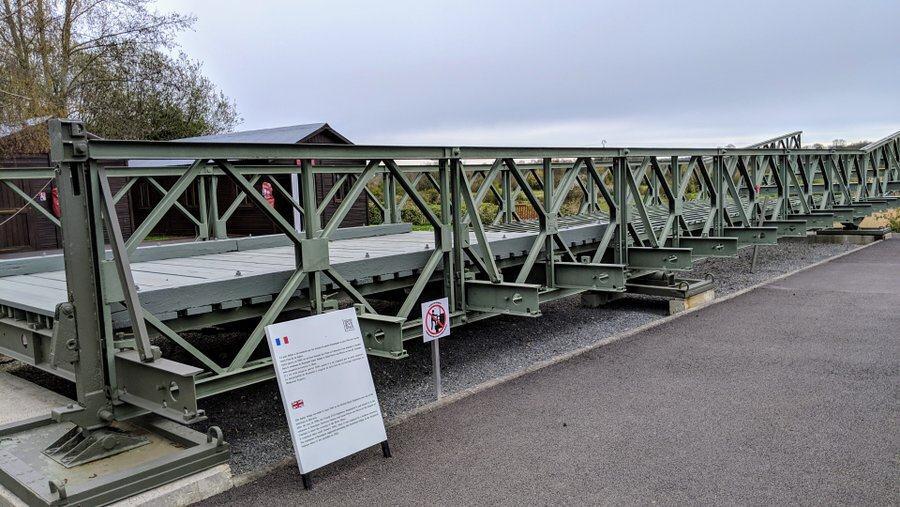
Now, seeing bits of Bailey bridge at military museums is not that unusual, so can’t say I was particularly interested until I looked at this sign…
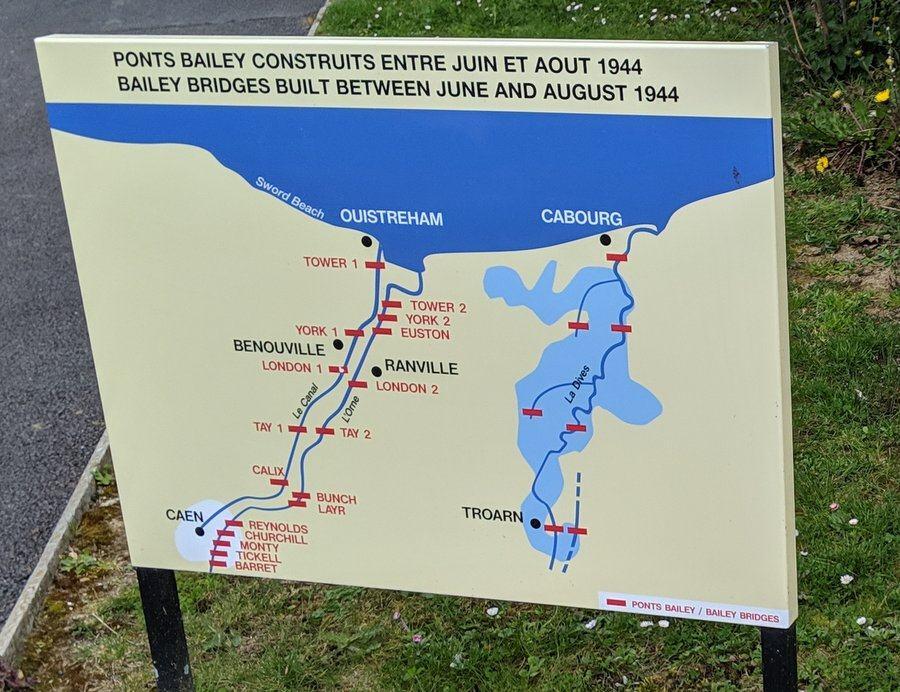
I had no idea Bailey bridges were so numerous! That’s 5 Baileys on the Orne canal, 12 on the river, and another 7 on the River Dives and its tributaries!
In a nearby hut there is more information about Bailey bridging. In ideal conditions, a short single span bridge could be built by a team 40 Royal Engineers in 3-4 hours. The genius of its design was in the modular structure. A single section can span a gap of up to 240 ft. So using the pre-existing supports of a bridge that has been destroyed, or floating pontoons, the bridge can cover almost any distance. If if gets damaged, you can just swap out the damaged section. Bailey bridging is much more interesting than I thought.
Field Marshal Montgomery was a huge fan. As he frequently said, he couldn’t get enough of it! In the hut, his post-war tribute is framed:
“Bailey bridging made an immense contribution to final victory in World War II. As far as my own operations were concerned with the Eighth Army in Italy and with 21 Army Group in NW Europe, I could never have maintained the speed and tempo of forward movement without large supplies of Bailey bridging.”
Pegasus Bridge now
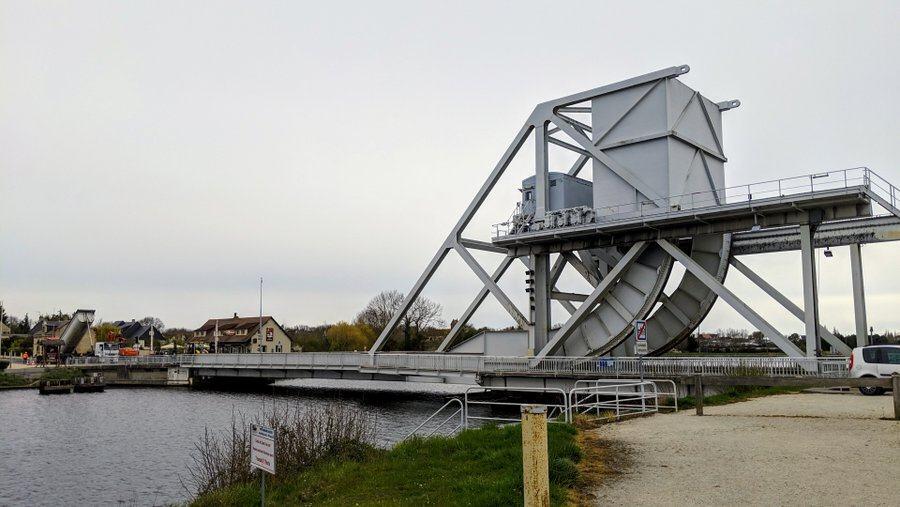
A visit to the Memorial Museum would be incomplete without a short stroll to the new bridge and the landing site itself. The spots where the three gliders landed are marked with stone cairns and you can marvel at how close they got to their objective.
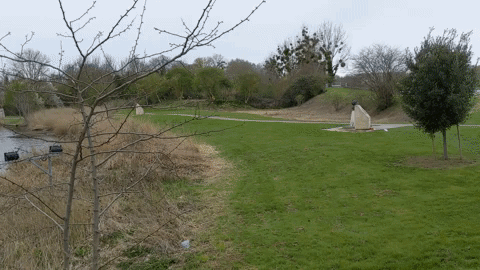
You might also cross the bridge and visit Café Gondrée. It still plays a role in the memory of the D-Day events. All visits to the bridge feature a visit to the family-run café which still has a special welcome for ex-servicemen. Arlette Gondrée, who was a small child living in the home with her parents when it was liberated, runs it, and is a key player in memorial events and anniversaries. The tea is delicious, and you might keep an eye open for the family of ducks who wander in from time to time seeking sustenance!
D-Day Normandy Posts
* You have to admire the glider pilots. All other pilots, if they messed up, could go around again for an attack or landing – glider pilots got one chance only. All other pilots, unless they were crashing, got to land on a runway or an airfield that had been prepared in advance. In combat, glider pilots had to land in places where nobody had tried landing before – the first time they got to learn the local topography & weather/wind conditions… was their only time. All other pilots got to wear parachutes. And perhaps most significantly of all, from a psychological point of view, all other pilots got to go home after. Maybe wind down with a pint in the mess. Army glider pilots had to pick up their gun (they were trained to use all the weapons of the airborne forces) and fight on the ground as airborne infantry, until relieved.
These particular members of the Glider Pilot Regiment did an outstanding job on 6th June. The three gliders designated for the canal bridge landed, in near pitch darkness (no night-sights in those days!), as close as 43 metres from their target. Two of those designated for the river bridge landed 300m and 700m away. The third, unfortunately, landed 13 kms away on the wrong river. Air Chief Marshal Leigh Mallory described it as “the most outstanding flying achievements of the war”. Some historians may not rate Leigh-Mallory very highly, but all the same, for an RAF commanding officer to concede that praise to Army pilots is quite something!
They don’t exist anymore. The Glider Pilot Regiment was disbanded in 1957 and I don’t think it ever got the attention and recognition it deserved.
** Den Brotheridge is buried in the churchyard (not the main CWGC cemetery adjacent) at Ranville on the east side of the Orne. Next to his gravestone there is a commemoration plaque from the Gondrée family.
*** By the way, there’s a statue of Bill Millin down in a car park by the Sword Beach 6 kilometres away.
Declaration: Most of this post was written in Oct 2019 when I was on a self-driving press trip as a guest of the Normandie and Calvados tourist offices. Museum entry was complementary. I returned in May 2023 and have updated it.
Factbox (Updated 2023)
Website:
Pegasus Memorial Museum
Getting there:
Avenue du Major Howard
14860 Ranville
France
It’s easiest to visit by car. There is a car park on site.
Entry Price:
| Individual | Group (20+) | |
|---|---|---|
| Adult | € 8.90 | € 6.90 |
| Child (8+), students | € 5.50 | € 4.70 |
Opening Hours:
| 1st Feb – 31st Mar | 10:00 – 17:00, daily |
| 1st Apr – 30th Sep | 09:30 – 18:30, daily |
| 1st Oct – 15th Dec | 10:00 – 17:00, daily |
| 16th Dec – 31st Jan | Closed |

